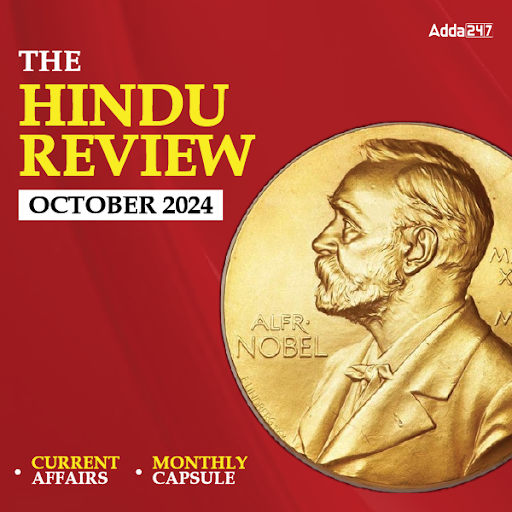Reasoning is a game of wits and presence of mind! Yes, it is true and it might seem as the greatest of the challenge after English Section’s surprises but yet this one can easily be dealt with. You just need correct practice and hardwire your brain to quickly make decisions of what to attempt and what to leave. Practice with these new pattern reasoning question for RRB PO Exam 2017.
Directions (1-5): Study the following information carefully and answer the questions given below:
There are eight friends A, B, C, D, E, F, G, and H are sitting around a circular table. They all work in different software companies viz. Honeywell, Mindtree, Infosys, TCS, Xerox, Cognizant, Fulcrum, and Wipro but not necessarily in the same order. Some of them are facing towards the center and some are facing opposite to center.
There are two persons sitting between A and H, who works in Wipro company. G sits second to left of A. G works in Fulcrum company and doesn’t sit adjacent to H. F works in Cognizant company and sits third to left of A. F faces same direction as A. There are three persons sitting between F and B, who works in TCS company. D works in Xerox company and does not sit adjacent to B. E works in Infosys company and sits third to right of D. A does not work in Mindtree company. A is sitting opposite to D and both the immediate neighbors of A face same direction as A (Faces same direction means if A faces towards the center, then both neighbors of A face towards the center and vice-versa). Immediate neighbors of D face opposite direction (Opposite direction means if one nighbour of D faces towards the center then other neighbor faces opposite to center and vice-versa). C sits immediate right of B, and both face opposite to the center. The immediate neighbors of E face opposite direction (Opposite direction means if one nighbour of E faces towards the center then other neighbor faces opposite to center and vice-versa).
Q1. C works in which of the following company?
(a) Honeywell
(b) TCS
(c) Mindtree
(d) Wipro
(e) None of these
Q2.Who sits third to right of F?
(a) D
(b) H
(c) C
(d) A
(e) None of these
Q3. Who sits third to left of B?
(a) G
(b) H
(c) A
(d) C
(e) None of these
Q4. Four of the following five are alike in a certain way based on their seating positions and so form a group. Which of the following is different from the group?
(a) A
(b) C
(c) F
(d) D
(e) H
Q5. Which of the following statements is/are definitely false?
(a) E is the immediate neighbor of A
(b) G sits immediate right of F.
(c) D is the immediate neighbor of F.
(d) G sits immediate right of E.
(e) A works in Honeywell company.
Directions (6-10): Each of the questions below consists of a question and two statements numbered I and II given below it. You have to decide whether the data provided in the statement are sufficient to answer the question. Read both the statements and
Given answer
(a) If the data in statement I alone are sufficient to answer the question, while the data in statement II alone are not sufficient to answer the question.
(b) If the data in statement II alone are sufficient to answer the question, while the data in statement I alone are not sufficient to answer the question.
(c) If the data either in statement I alone or in statement II alone are sufficient to answer the question.
(d) If the data even in both statements I and II together are not sufficient to answer the question.
(e) If the data in both statement I and II together are necessary to answer the question.
Q6. Who amongst A, B, C, D and E is the tallest?
I. D is shorter than E but taller than C.
II. B is not as tall as A. C is taller than A.
Q7. Are all the five friends, viz, P, Q, R, S and T, who are seated around a circular table, facing the centre?
I. P sits second to the left of Q. Q faces the centre. R sits second to the right of P.
II. S sits third to the left of T. T faces the centre. Q sits on the immediate left of S. T is an immediate neighbor of Q.
Q8. How is ‘can’ written in a code language?
I. ‘you can see’ is written as ‘la pa ni’ and ‘did you see’ is written as ‘jo ni pa’ in that code language.
II. ‘you did that’ is written as ‘pa si jo’ in that code language.
Q9. Point P is towards which direction from point Q?
I. Point P is the south of point D. Point D is in the west of H. Point D is in the middle between the Point P and R. Point Q is in the east of point of R.
II. Point H which is north of point D. Point P is in south of point D. Point R is in east of point D and south of point Q.
Q10. How is S related to M?
I. N is mother of S. S’s brother P is the only son of M.
II. N is the wife of M. M has two children S and P. P is the son of N.
Directions (11-15): Question consists of some statements followed by five conclusions. Consider the given statements to be true even if they seem to be at variance with commonly known facts. Read all the conclusions and then decide which of the given conclusion does not logically follow from the given statements using all statements together.
Q11. Statements: Some policy is global. All global are money. No money is bank. All cash is bank. Some cash is success.
Conclusions:
(a) Some policy is not bank.
(b) No global is bank.
(c) Some success is bank.
(d) All global being cash is a possibility.
(e)All success is being bank is a possibility.
Q12. Statements: Some market is investor. No investor is stock. Some financial is goal. No financial is light. All financial is sky.
Conclusions:
(a) Some market is not stock.
(b) Some goal is not light.
(c) Some sky is not light.
(d) All market being goal is a possibility.
(e) All market being stock is a possibility.
Q13. Statements: All debt is deficit. Some deficit is tax. All tax is budget. Some tax is money. No money is coin.
Conclusions:
(a) Some deficit is budget.
(b) Some tax is not coin.
(c) Some budget is not coin.
(d) Some debt is tax.
(e) All deficits being tax is possibility.
Q14. Statements: Some white is black. All black is green. No black is violet. All violet is red. Some violet is yellow.
Conclusions:
(a) Some white is green.
(b) Some white is not violet.
(c) Some green is not violet.
(d) Some yellow is not red.
(e) All black being red is a possibility.
Q15. Statements: Some boy is tall. All tall is good. Some good is best. No best is short. All short is fat.
Conclusions:
(a) All boys being best is a possibility.
(b) Some good is not short.
(c) All best being fat is a possibility.
(d) All tall being best is a possibility.
(e) Some boy is best.





 The Hindu Review October 2022: Download ...
The Hindu Review October 2022: Download ...
 How to Prepare for RBI Grade B Interview...
How to Prepare for RBI Grade B Interview...
 SBI PO Previous Year Question Papers Wit...
SBI PO Previous Year Question Papers Wit...




